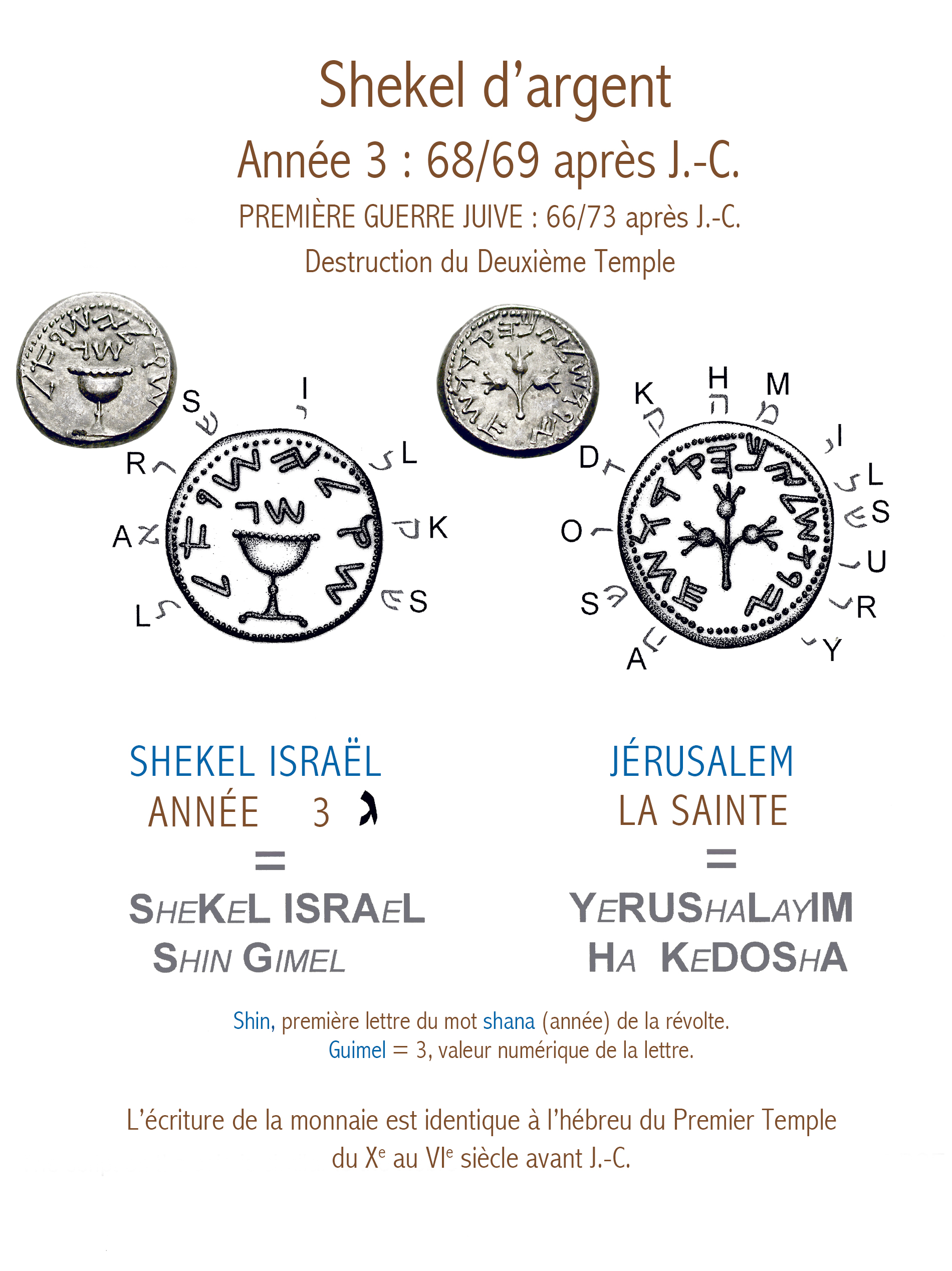
Bible, History, Archaeology
Bible,
History,
Archaeology
Jewish coins,
First and second revolts
An exceptional piece
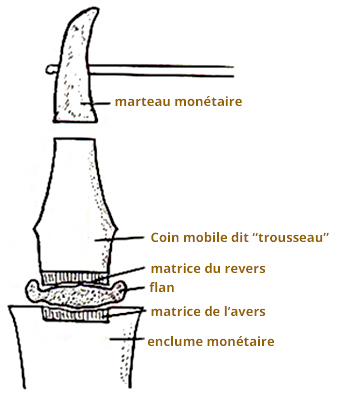
Image opposite: possible system for minting coins. Public domain.
The coin (pictured below) came from the Shoshana collection, one of the most important private collections known for coins from Judea. It is the fruit of 40 years of research and purchases by a passionate Californian, who deliberately remained anonymous, and was recently put up for sale.
The coin is extremely rare. This silver shekel is the only known example in the world, along with the one on display at the Israel Museum in Jerusalem, to belong to the batch of the very first coins minted by the Jews during the conflict that pitted them against Rome in May 66 AD.C. It was therefore a prototype, since the Jewish fighters soon decided to redesign the three types of silver coin in circulation at the time - the shekel, the half-shekel and the quarter-shekel - all bearing the same circular obverse legend «Shekel of Israel» with «(an) 1» in the center.

One of only two remaining examples of the half-shekel prototype. Magnifying glass image © n3d-artphoto.com. From left to right:
Obverse: A string of pearls surrounds a chalice. The letter aleph in Paleo-Hebrew appears above the vase. The inscription reads: «Israel shekel»
Reverse: a string of pearls surrounds the branch with three pomegranates. The inscribed text reads: «Holy Jerusalem».
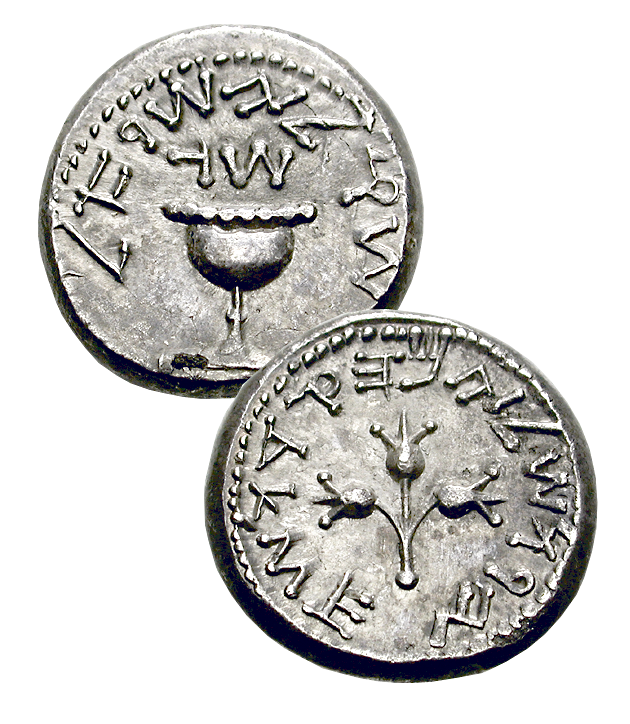
Shekel of Israel. Dated year III of the first Jewish revolt. 66-69 A.D.
Obverse The cup is surmounted by the inscription «Shekel of Israel».
Revers The branch with three pomegranates on the reverse is surmounted by the words «Jerusalem the holy»:
«Yerushalayim ha-kedocha». Image © Hendin 662.
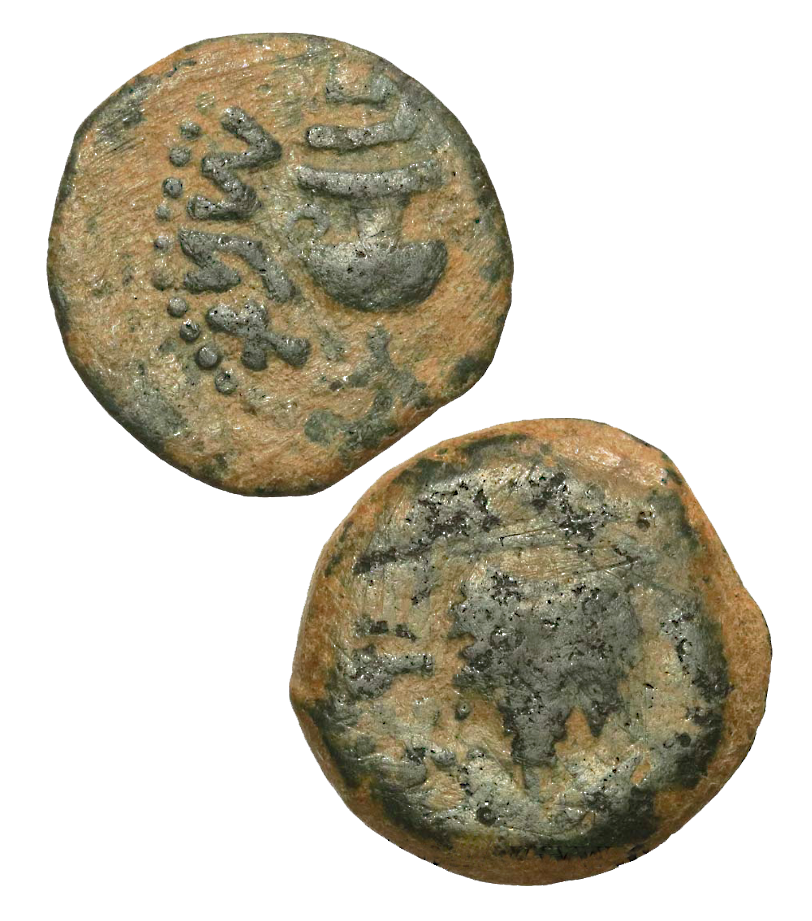
Judea - Currency First revolt, prutah, Jerusalem.
Obverse Hebrew inscription, SHENAT SHAT'IM’.
Description obverse vase or ewer (object of worship). Obverse translation: (year 2).
Revers Hebrew inscription, HERTU Z'ION
Lapel description Vine leaf and branch (a reminder of the fertility of Judea, a symbol often depicted, even outside of coins, since the earliest biblical times).
Translation revers : Deliverance of Zion, (i.e., Judea delivered from the Romans).
Private collection © Marc Truschel.
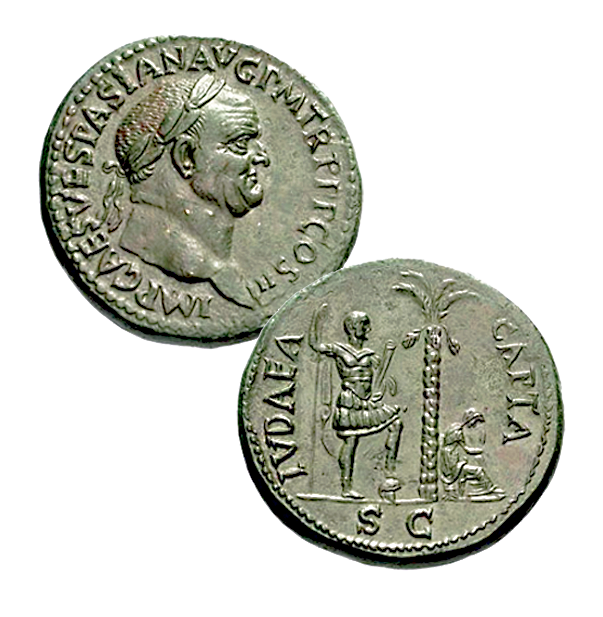
Captive Judea, bronze sesterce, circa 70, Rome.
Obverse: IMP CAES VESPASIEN AUG PM TRP PP COS III :
«Emperor Caesar Vespasian, Augustus, sovereign pontiff, exercising tribunicate power, father of the fatherland, consul for the third time».».
Reverse: captive Judea, JUDAEA CAPTA SC (Senatus consulto).
A weeping woman seated under a palm tree represents captive Judea under the guard of a Roman soldier. Numismatik Lantz, Munich.
The coins of the Second Revolt in 135
The Roman legions, under the leadership of Vespasian and his son Titus, In the year 70 AD, the Jewish revolt was crushed, but the Jews managed to rise again just over 60 years later.
This second revolt, known as the Bar-Kokhba (132-135 CE), under Emperor Hadrian, lasted just two and a half years. And the pieces are much rarer.
As in 66, the coins were dated to the start of the revolt. For example, a coin inscribed, «year 1 of Israel's redemption».» or another inscription, «Year 2 of Israel's freedom».
The legend «Year 3 of Israel's redemption».» is very rare (see below).
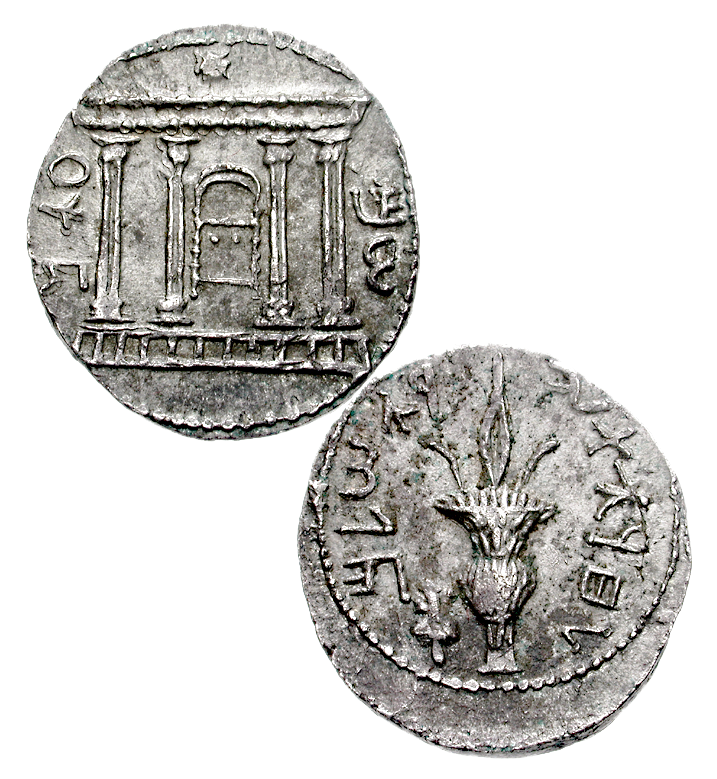
JUDÉE, Bar Kokhba revolt. 132-135 CE. AR Sela
Silver tetradrachm (28mm, 14.07 g, 11h). 134/5.
Obverse Temple facade, with the Ark of the Covenant in the center (?); surrounded by the name SHIMON. A rising star, above.
Revers a lulav, a plant bundle, with etrog. «To the freedom of Jerusalem». Mildenberg 85.12 (O127/R44′); Meshorer 233; Hendin 711. © Classical Numismatic Group, Inc./cng.
Table below:
Composition of a shekel from the First Jewish Revolt of 66/73
